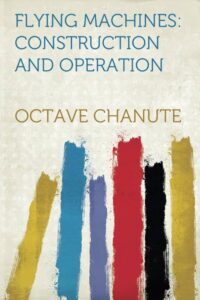Chapter XXI — Flying Machines Construction And Operation
byChapter XXI — Flying Machines Construction And Operation provides a thorough comparison between dirigible balloons and early flying machines, focusing on their design efficiency, cost of operation, and potential for widespread use. At the time, dirigibles were impressive in size and endurance but were burdened with considerable financial and technical challenges. Constructing one, particularly models like the Zeppelin, demanded investments well over $100,000—a massive sum for that era. This financial strain was compounded by the high cost of operation, especially for hydrogen refills, which could reach several hundred dollars per flight. Even with careful handling, hydrogen, being both costly and highly flammable, introduced a dangerous variable that made long-term use risky. Additionally, dirigibles were not agile in turbulent weather. Their large surface areas made them susceptible to wind resistance, and events such as the destruction of a Zeppelin by lightning in 1908 emphasized their vulnerability.
Despite these drawbacks, dirigibles occasionally demonstrated remarkable performance under favorable conditions. Notable examples include the Patrie, which flew 187 miles in less than seven hours in 1907, and Zeppelin No. 3, which covered over 67 miles in a little more than two hours the previous year. While these flights were significant at the time, their overall efficiency and practicality remained limited. Their success was highly dependent on weather and required pre-planned routes with logistical support for refueling and maintenance. In contrast, flying machines began showing far greater adaptability and autonomy. The Wright brothers, in 1905, flew 24 miles in 38 minutes with far less cost and complexity, and in 1909, pilot Lambert demonstrated nearly 30 miles of continuous flight in under an hour using a Wright biplane. These achievements marked a shift from mere experimentation to functional transportation. Early airplanes offered better speed, directional control, and responsiveness to changes in environment—all while requiring a fraction of the support that dirigibles demanded.
Hydrogen production, central to dirigible operation, brought its own logistical complications. Generating hydrogen required materials such as iron or zinc, combined with sulfuric or hydrochloric acid, which were not easily obtained or transported in large quantities. Producing the gas in sufficient volume for large airships often meant constructing temporary plants or bringing industrial-scale equipment to remote areas—both time-consuming and expensive undertakings. These requirements made dirigibles less feasible for spontaneous or extended travel, especially for military applications where speed and mobility were critical. Even if a balloon survived a flight without incident, the need for immediate gas replenishment often rendered it unusable for follow-up operations. By contrast, early aircraft could be refueled with gasoline, which was lighter to carry, more readily available, and safer to store and use. This difference in logistical demands further tilted the scale in favor of fixed-wing aircraft as the more practical solution.
In military discussions of the time, dirigibles were initially favored for reconnaissance due to their potential to hover and provide a bird’s‑eye view over battlefields. However, their slow movement and large profiles made them easy targets. Their gas-filled envelopes were highly susceptible to bullets and shrapnel, and once compromised, they often descended rapidly or burst into flames. Airplanes, while limited in payload capacity in their early years, could scout faster, cover more territory, and return to base with less risk of being intercepted. Their size and speed made them harder to hit and easier to maneuver, and as technology advanced, even small aircraft became capable of carrying cameras, radios, or lightweight weapons, further expanding their utility. These developments highlighted the scalability and adaptability of flying machines in both civilian and military contexts.
Ultimately, the chapter presents dirigibles as important but transitional technology—an early attempt at conquering the skies that was quickly outpaced by the engineering evolution of airplanes. Balloons had certainly played a crucial role in proving that controlled aerial navigation was possible. However, they were limited by their reliance on volatile gases, sensitivity to weather, and high operating costs. Airplanes, by contrast, proved to be faster, safer, cheaper to maintain, and more flexible in usage. As aviation entered a more mature stage of development, the qualities that defined success shifted from endurance alone to efficiency, responsiveness, and cost-effectiveness. The Wright brothers’ breakthroughs did not just improve aircraft—they changed the expectations for what flying technology could and should do. This chapter underscores that shift, marking the decline of balloon dominance and the rise of the modern airplane as the future of aviation.


